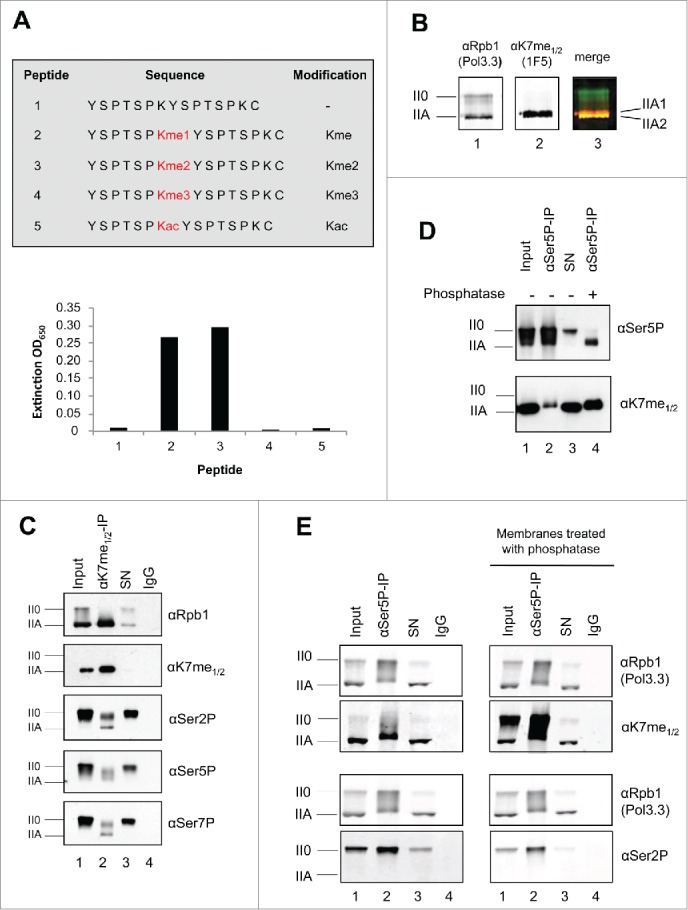Figure 2.

Kme1/2 specific mAb production for CTD. (A) Survey of synthetic CTD peptides used for immunization and characterization of CTD specific mAbs. mAb 1F5 was raised against a dimethylated K residue. mAb 1F5 showed reactivity toward mono- and di-methylated K, but not toward unmethylated, trimethylated, or acetylated K residues of CTD in ELSIA experiments. (B) mAb 1F5 strongly reacts with the IIA form of RNAPII in Western blot analysis, but not with the II0 form. RNAPIIA is composed of a slowly migrating, strongly methylated IIA1 and a faster migrating, unmethylated or weakly methylated IIA2 form. mAb Pol3.3 recognizes Rpb1 outside the CTD. (C) mAb 1F5 strongly precipitates the IIA form of RNAPII, and partly the II0 form phosphorylated at Ser2, Ser5, and Ser7 residues. (D) Phosphatase treatment unmasks the 1F5 epitope in RNAPII0. Rpb1 was precipitated with a Ser5P specific mAb from whole cell extract (Input), treated with alkaline phosphatase, and subsequently analyzed for K methylation with mAb 1F5. SN, supernatant of IP. (E) RNAPII was precipitated with a Ser5P specific mAb. CTD K7 methylation of RNAPII0 was analyzed with and without treatment of membranes with alkaline phosphatase.
